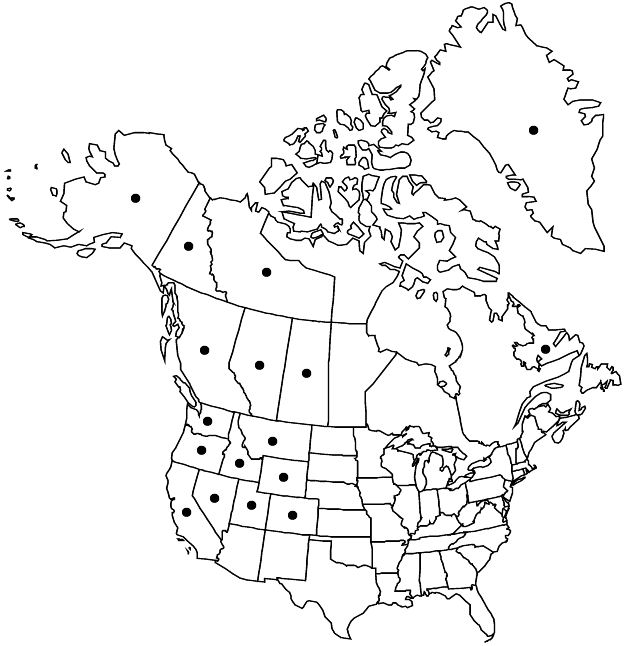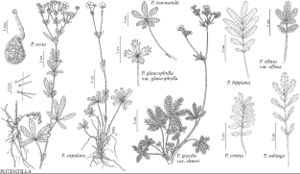Potentilla glaucophylla var. glaucophylla
Stems (0.5–)1–3(–4.5) dm. Basal leaves palmate, rarely subpalmate; distal 1/3–1/2(–2/3) of leaflet margins incised 1/3–1/2 to midvein, undivided medial blade 3–7(–10) mm wide, teeth broadly lanceolate. 2n = 42, 90, 91, 101.
Phenology: Flowering summer.
Habitat: Edges of meadows, dry gravelly flats and slopes in montane to subalpine conifer woodlands, mixed grassland communities, alpine tundra
Elevation: (0–)100–3500 m
Distribution

Greenland, Alta., B.C., Nfld. and Labr. (Labr.), N.W.T., Sask., Yukon, Alaska, Calif., Colo., Idaho, Mont., Nev., Oreg., Utah, Wash., Wyo.
Discussion
Variety glaucophylla is widespread through much of western North America from southern Alaska, Yukon, and Northwest Territories south mainly in the high mountains to California, central Colorado, and Utah. The variety is also found on scattered mountain ranges in the Great Basin and is a provincial rarity in southwestern Saskatchewan. Greenland plants that have been called var. ranunculus are also included here, since we can find no morphologic differences in spite of the significant geographic disjunction. The most common phase is glabrate; hairy populations are primarily found in the Rocky Mountains and the Mount Angeles area of Clallam County, Washington.
The lower elevation is provided by the Greenland populations. The variety otherwise tends to occur at higher elevations, and to bloom somewhat earlier, than sympatric Potentilla gracilis, which is the species most often confused with var. glaucophylla.
Selected References
None.
